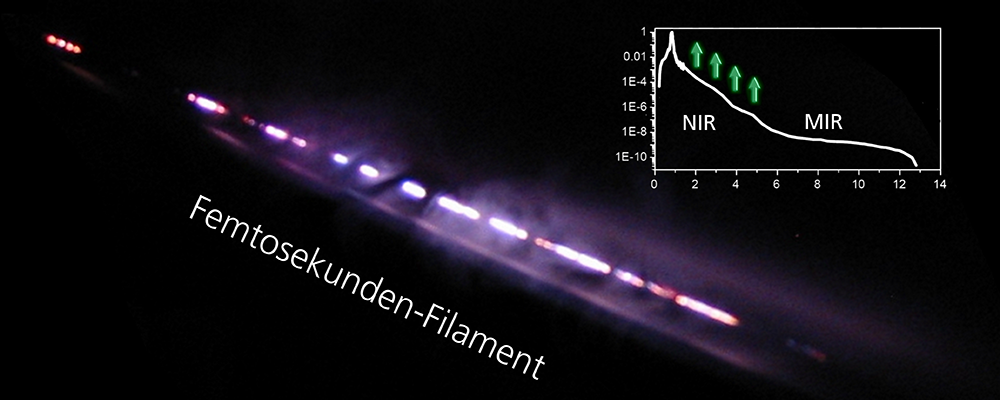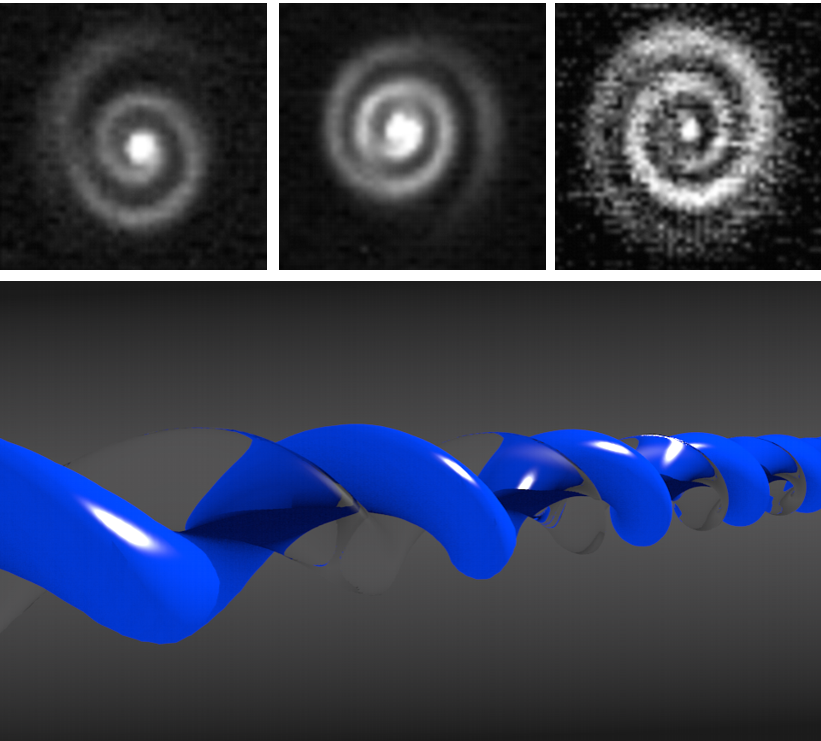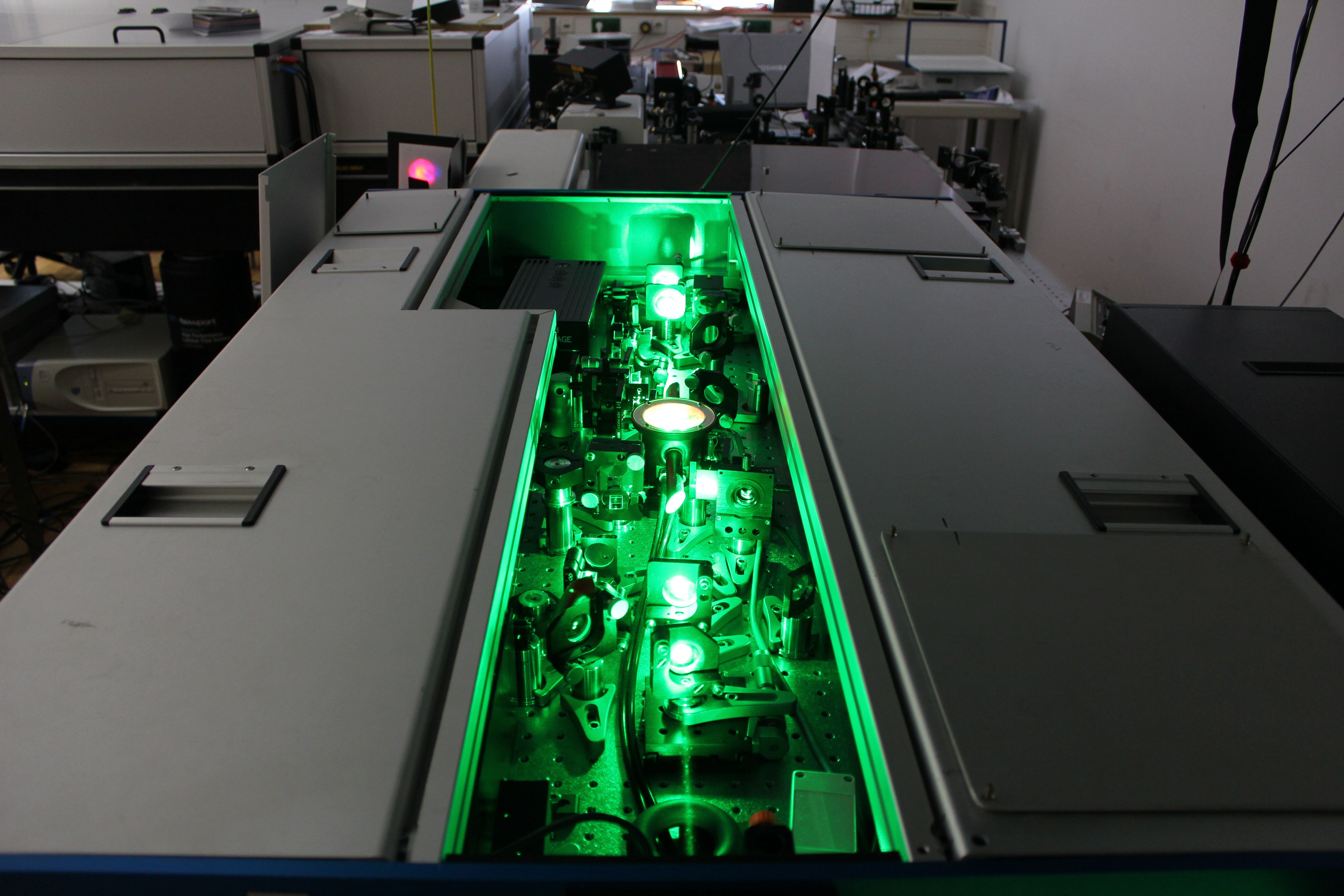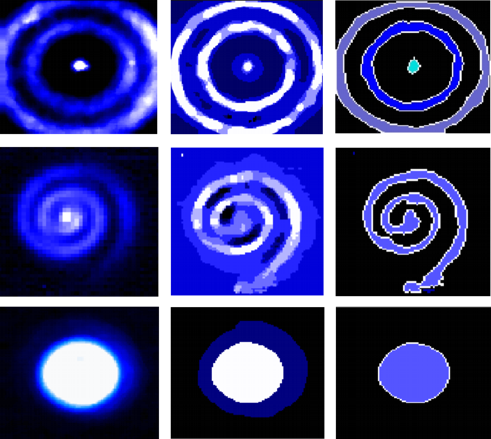
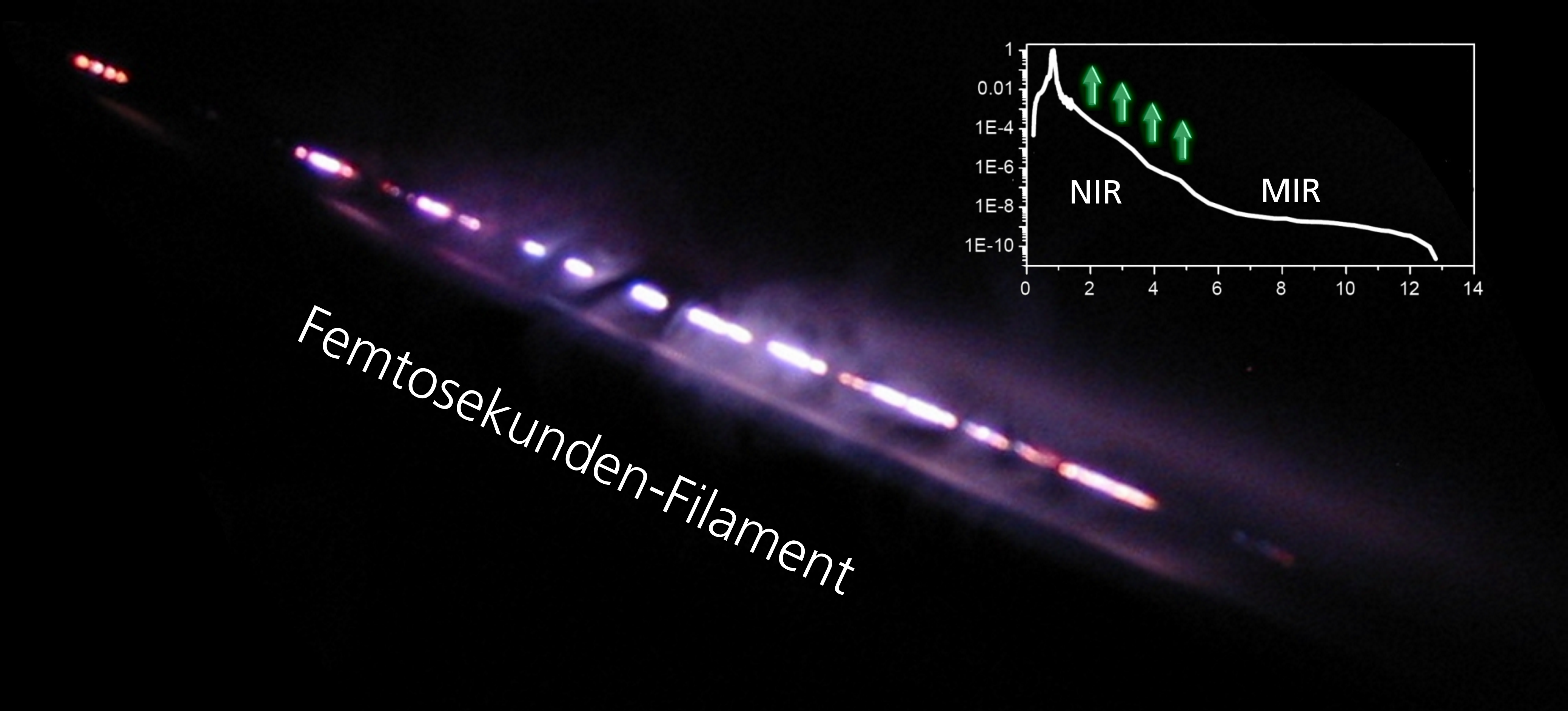
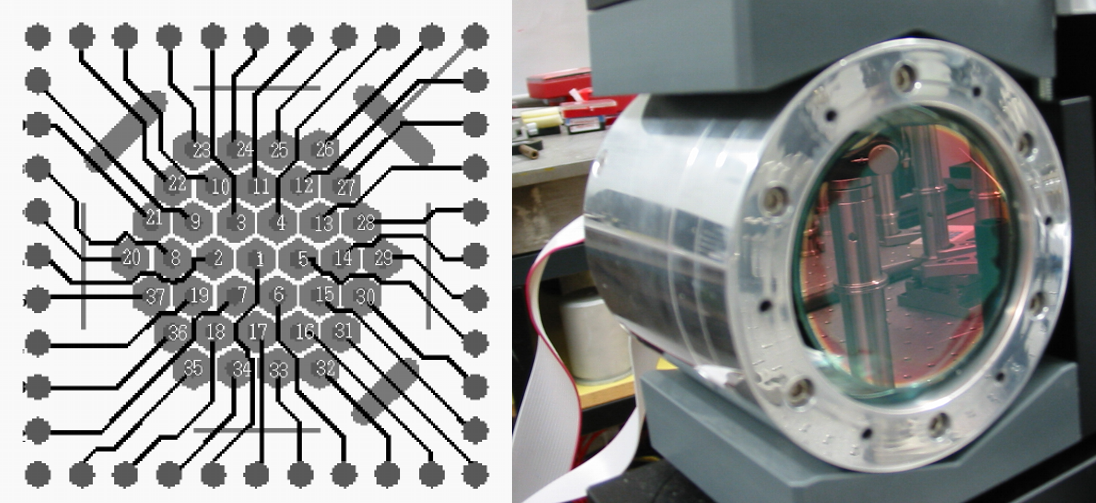
Description
The filaments are generated with a femtosecond laser with a central wavelength of 800 nm and a repetition rate of 10 Hz. The pulse energy of the laser is in the range of 2 mJ to 20 mJ, so that for different optical setups essentially a single filament with a length of several meters can be generated. A specially developed evolutionary algorithm is used to control the pulse shapers and thus vary the parameters of the laser pulses. This allows important properties of the subsequently formed filaments to be changed, such as the strength of the emitted signal in different wavelength ranges or the structure of the spatial emission pattern.
By means of the evolutionary algorithm the structure of the laser pulses can be automatically optimised for any application or investigation (adaptive optimisation). A feature of the algorithm used is a high stability against strong fluctuations of the measurement signal. Special image recognition methods (see Fig. 3) ensure that the emission patterns found during an optimisation are always "remembered" and can only be replaced by improved results, even in a noisy measurement environment.
The properties of the radiation generated by the filament can be examined in detail in the range of 0.4 to 5.3 µm in the single shot process. Complex emission patterns are measured with spatial and spectral resolution using special optical set-ups.
Ultra-short laser pulses investigate non-linear effects in air
Modern ultra-short pulse laser systems have made it possible for several years to directly investigate and use special non-linear effects in air. During the propagation of ultrashort, high-intensity laser pulses in the atmosphere, thin, long plasma channels are formed, so-called filaments.
The filaments have waveguide properties and make it possible to preserve the diameter and pulse duration of the laser pulses over long distances. The frequency spectrum of the laser radiation is thereby broadened.
The resulting broadband radiation ("white light") extends from the visible spectral range to the infrared range and is suitable for the investigation of atmospheric layers and air density distributions but also for the remote detection of aerosols and gases. However, due to very high peak intensity of the laser radiation inside the filaments, they also pose a high threat to eyes and sensors. Many properties of this novel light source, especially in the infrared range, are only partially known so far.
Task
The aim of the project is to evaluate the potential of the filaments as a possible infrared light source, to investigate the propagation phenomena of the generated infrared radiation in the atmosphere and to verify protection concepts against the broadband radiation. For this purpose, filaments are produced in a controlled manner in air and the resulting broadband infrared radiation is measured spatially and spectrally.
The aim is to find out to what extent the generation of infrared radiation can be controlled by adaptive pulse shaping. The control is achieved by modifying the structure of the laser pulses that produce the filaments in which the infrared radiation is generated. The spatial wavefront of the laser pulses is varied by a deformable mirror. The temporal energy distribution of the laser pulses can also be modified with an acousto-optical modulator.
 Fraunhofer Institute of Optronics, System Technologies and Image Exploitation IOSB
Fraunhofer Institute of Optronics, System Technologies and Image Exploitation IOSB 